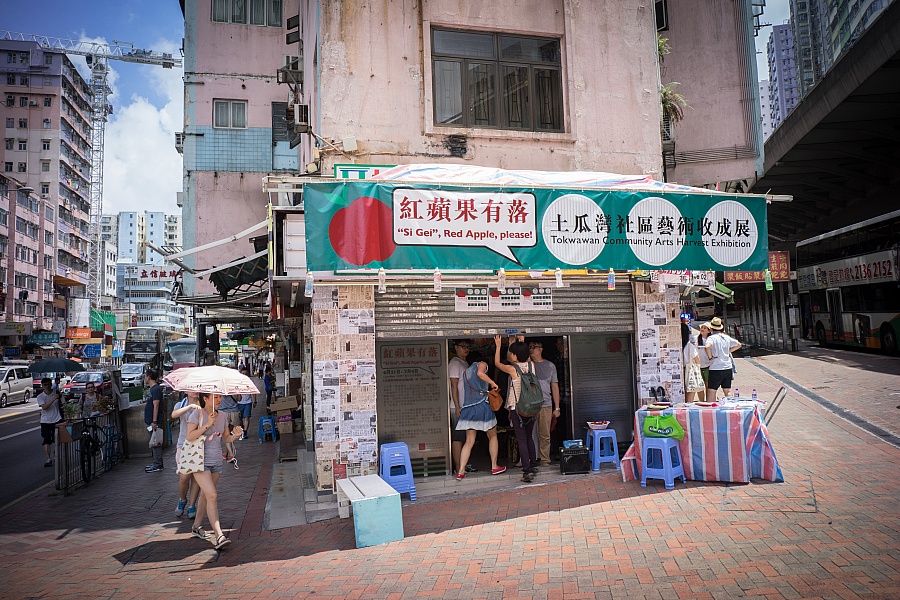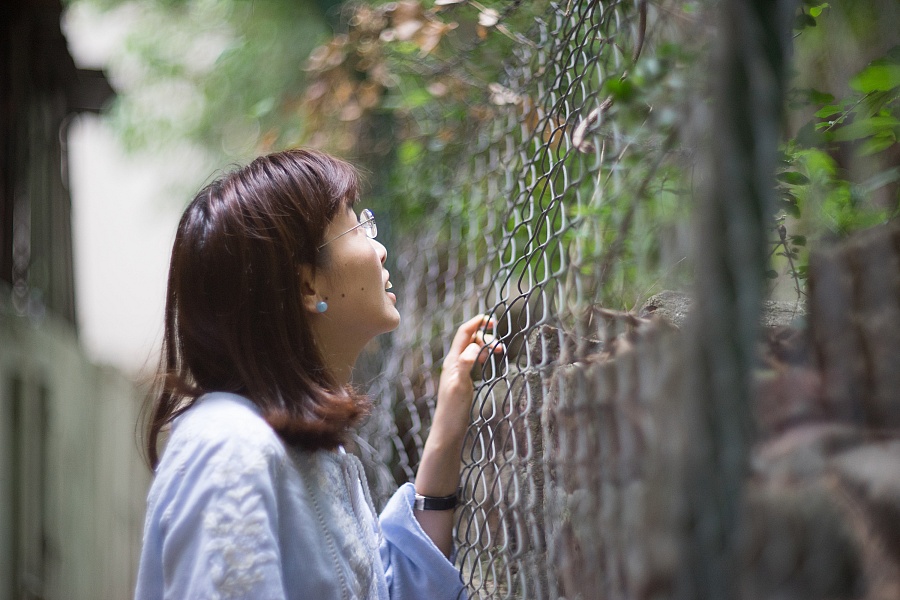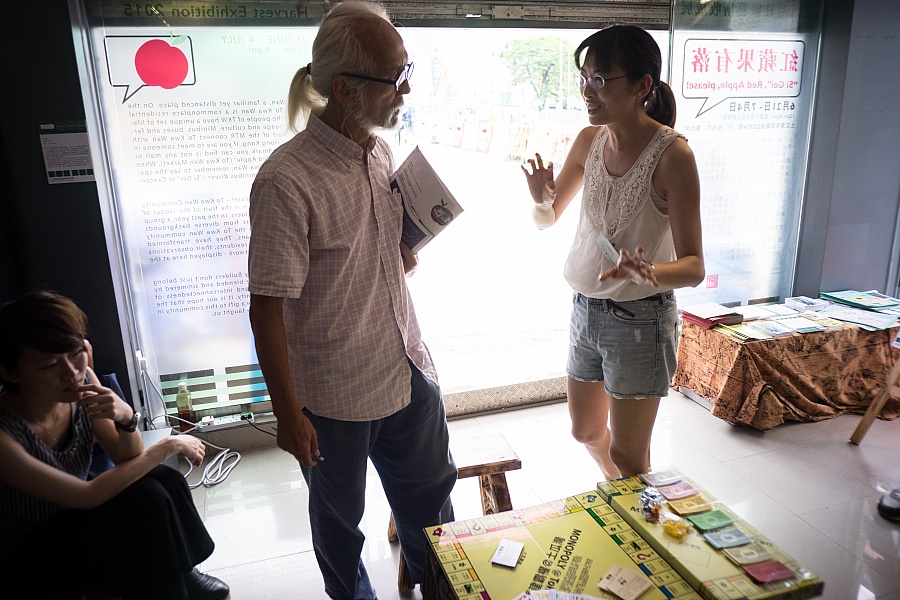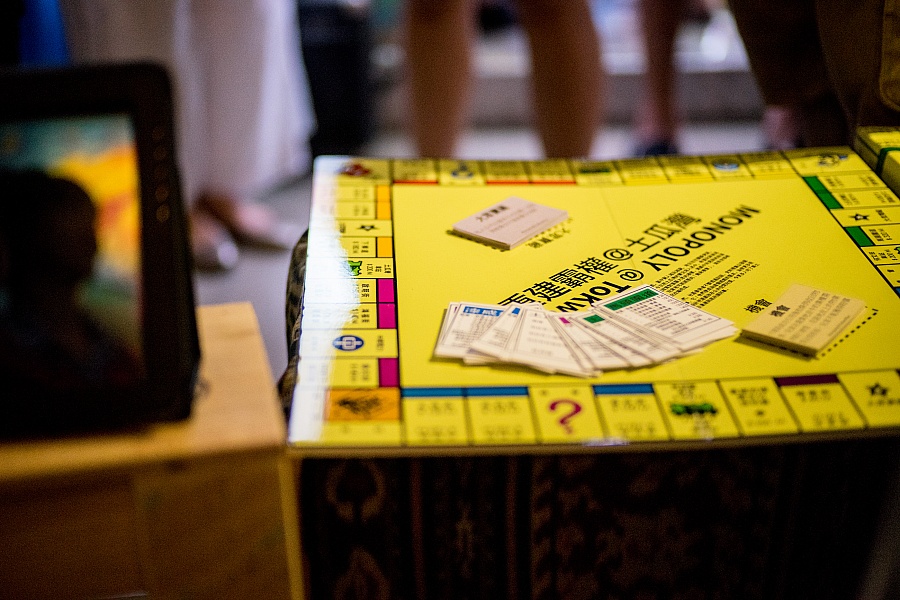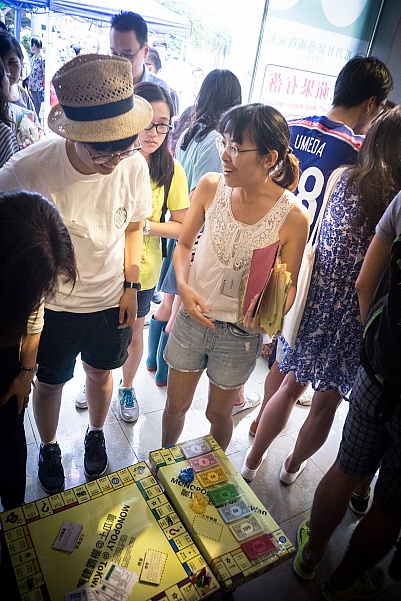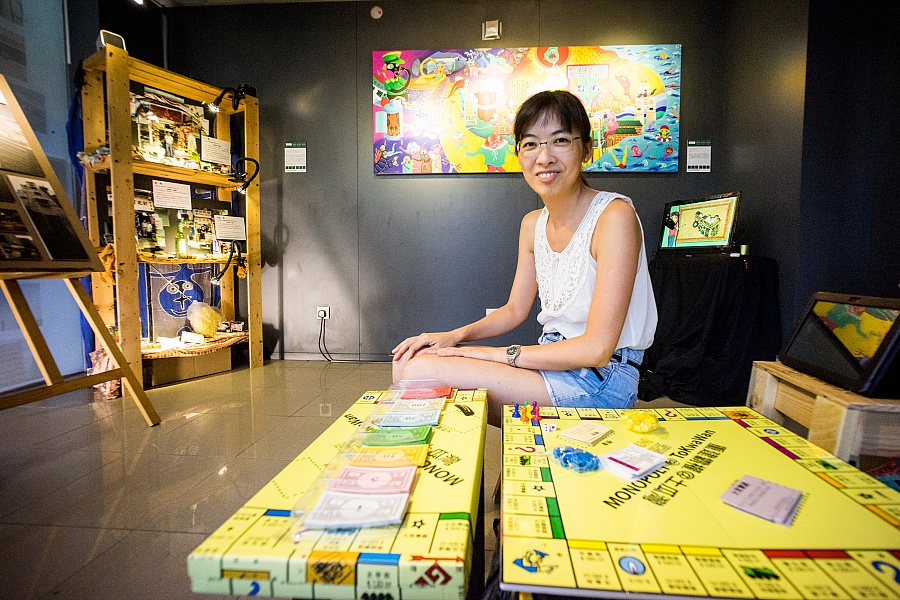I first met Sophia SO in a course on sociology. She is a razor-sharp, awe-inspiring tutor who points out my fellow classmates’ blind spots during tutorial sessions. Upon joining Urban Diary as an intern, I had the opportunity to interview her. It was only then that I begin to appreciate Sophia in a new light. This past March, Sophia stepped down from her post as President of Linkwatch, an NGO that monitors and advocates against Link Reit, the city’s first real estate investment trust. During her tenure, Sophia took charge of field research by interviewing tenants, residents and workers. Her work exposed the operation of Link REIT malls and the problems of privatisation. However, the media has already extensively covered Sophia’s effort on reforming the Link REIT. This issue of Urban Diary focuses instead on her community work in To Kwa Wan and Hung Hom.
Monopoly in the Neighbourhood
Around three years ago, Sophia and 11 other artists participated in the To Kwa Wan community builder scheme, organised by Community Cultural Concern. The artists began with interviews with residents and in-depth observations of the neighbourhood. After a year of immersion, the artists expressed themselves through different creative medium. Their creative pieces were then exhibited in ToHome. While some artists narrated To Kwa Wan’s stories through photography and paintings, others created wooden trolleys which evoke memories of the Kowloon City Pier in its heyday. Sophia designed a game called “Redevelopment Hegemony @ To Kwa Wan”, which plays like Monopoly. The game allows players to adopt the role as To Kwa Wan residents experiencing the ills of urban renewal.
In a game, there is always a chance for the tide to turn. But in real life, the speed with which real estate developers acquire old residential blocks often exceed residents’ expectation. As a child, Sophia grew up in five-storey Civil Servants Cooperative block in Hung Hom. Throughout the years, her family had to deal with numerous acquisition efforts from private developers. In fact, the land lease for her home was bundled with the lease of another civil servants residential block over on the Hong Kong Island. In the 1980s, a private developer intended to acquire both leases, and offered an attractive “flat-for-flat” package with over one million cash in compensation. However, the acquisition was halted because of June Fourth Incident in 1989. In 1993, a financial intermediary working for another developer offered $4 million and promised to pay for the residents’ land premium. By the late 1990s, the developer had acquired all but a dozen residential units.
The Nightmare of Compulsory Sale
Sophia’s father was one of the tenants who rejected the offer. He found it impossible for the family to relocate to a flat of comparable size with the compensation. However, the tides would soon turn for the worse, when the government passed the Land (Compulsory Sale for Redevelopment) Ordinance in 1999. The new ordinance meant that developers only needed to acquire 90% out of all leases of a lot to apply for compulsory sale for redevelopment. At first, only slightly more than 80% of tenants agreed to sell. However, one tenant decided to sell amidst the impasse, giving the developers the 90% ratio needed for compulsory sale. In 2005, the developers went to the court, filing the first case for compulsory sale under the new ordinance. In response, Sophia’s father and other concerned tenants formed an alliance. In an attempt to uphold their lawful rights, they appointed an independent surveyor to value their homes.
Unfortunately, the written law did not safeguard the rights of minority owners. As Sophia recalls, the minority tenants only received the legal documents in the last minute, the night before the scheduled hearing with the developers. There were so many documents that they could be stacked across the length of an oval shaped dining table. “There was no way we could go through the sea of documents,” Sophie explains. Confronted with a hopeless litigation, the owner alliance decided to settle with the developers. The new price of acquisition, however, was much lower than offered in 1993. But the tenants were left with little to bargain with. By mid-2007, the developers have reached agreements with the last two owners. The dozen-year long nightmare of acquisition finally came to a close. Sophia and her family moved to Mei Foo, and the five-storey cooperative block was replaced by a 40-storey prime residential building. An organic neighbourhood with its vivid lifestyle and memories was destroyed in a blink. Sophia was also dismayed to find that many elderly neighbours passed away soon after the forced dislocation.
Ceiling Fan in the Old Home
Sophia’s old family house was completed back in the 1950s, lined with walls made of solid brick. In contrast, their new residence is made with hollow bricks. When refitting their new residence, Sophia’s father almost drilled a hole through the wall. Sophia still recalls the vintage ceiling of her old home, which was so tall that it could accommodate a large ceiling fan. Although the new residence could also house the fan, the vibes paled in comparison. The generous garden view was also nowhere to be seen. “There was a garden right below my old family home. In the middle was a pine tree surrounded by granite. Four separate paths led to different areas of the residential block. Lemon, guava, orange and other fruit trees were scattered across the garden. I used to take many walks in that old garden of ours,” explains Sophia. The garden in Mei Foo is a park managed by the prohibitive Leisure and Cultural Services Department. There are plants and pavilions in the park. But there are also numerous signs about prohibited activities in the park.
In Hong Kong, urban renewal takes place every day, and developers thirst for additional land. By revising the law in the name of urban regeneration and economic development, the government has sacrificed the neighbourly network of its feeble citizens. Sophia laments that high-rise buildings are increasingly found among old factories and tenement housing. Big malls have also strangled the potential for people to gather in busy streets and small alleys. With the imminent completion of the Shatin-Central Link, To Kwa Wan would face a new round of transformation. Safeguarding the neighbourhood’s history and culture amidst the tidal wave of development has become the foremost challenge for Hong Kong’s sustainable development.
Q&A
What do you like most about Hong Kong?
60% of Hong Kong’s land comprises country parks. Hong Kong also has an accessible transport system that takes people from dense urban areas to the countryside.
What do you dislike most about Hong Kong?
Mainlandisation; lack of democracy
What could be done to make Hong Kong more sustainable?
More equality and democracy, close the rich-poor gap
Epilogue: A Brief History of ToHome
The House of To Kwa Wan Stories, also known as ToHome, was founded by the charitable organisation St. James’ Settlement in 2014. It has since been jointly operated by Community Cultural Concern, FixingHK, and St. James’. ToHome’s goal is to reach out to the kaifong through various initiatives and inspire a sense of humane and communal life. Based in 16 Hung Fook Street, ToHome strives to build a home that safeguards the stories and lifestyle of the neighbourhood.





